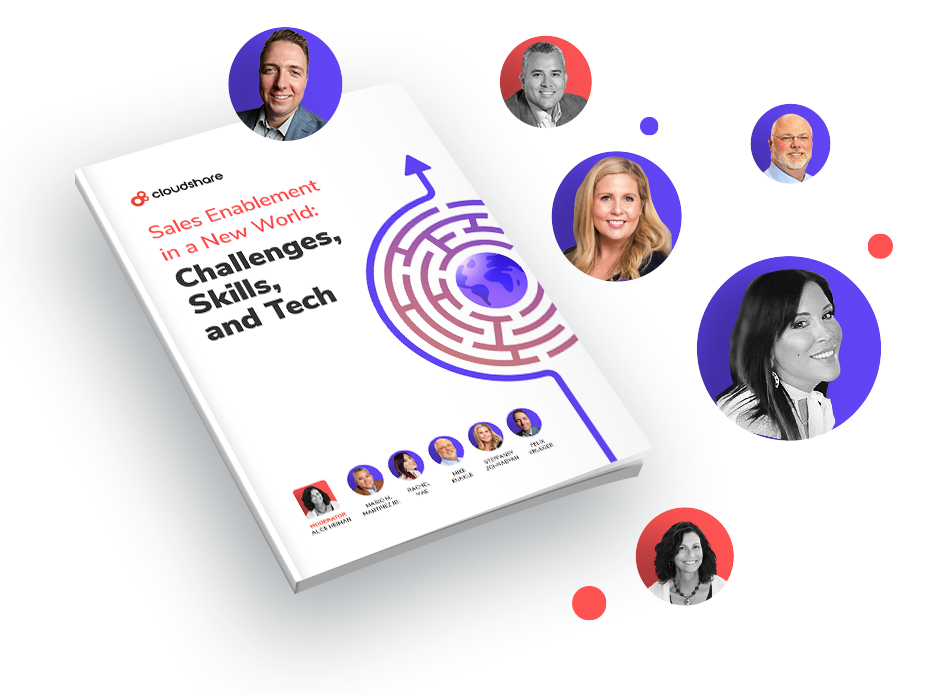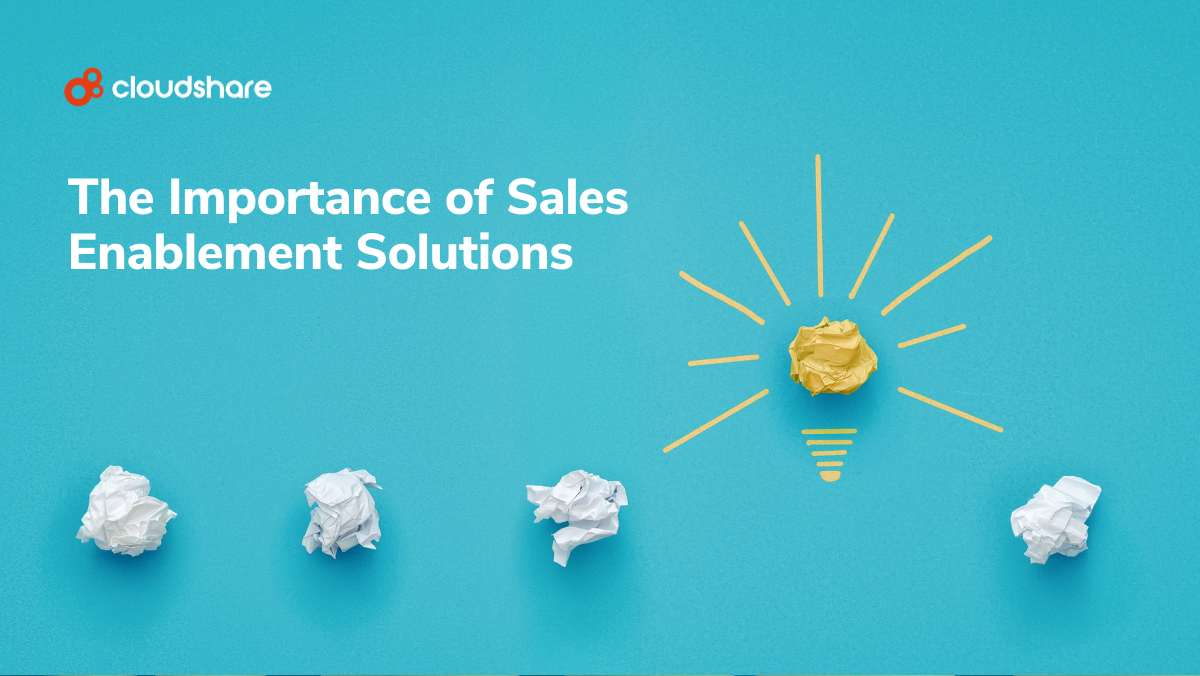
It’s hard to overstate how important pre-sales practices are to the health of your bottom line. The pre-sales team’s job is to understand the customer’s business and show how your software and technology can provide a solution to their business challenges. The sales engineer’s (SE) technical knowledge allows them to present your solution and bring it to life for the customer, as well as highlight the specific features and aspects that will resonate with the relevant stakeholders.
Looking to deepen the capabilities of pre-sales teams in your business? Keep reading for the ultimate pre-sales deep dive, and the answers to 3 common pre-sales roadblocks.
What are some common pre-sales activities?
Let’s begin by understanding a little more about pre-sales as a function in the business. Pre-sales is all about what happens before a lead has been acquired and up until the point that a customer signs up with your business. Common pre-sales activities are:
- Prospecting to find the right leads, and qualifying them to determine if they are the right fit for the company.
- Completing product and market research, as well as using data to perform customer analysis of different segments.
- Understanding customer pain points and finding solutions to walk them through objections to the sale.
- Creating customized experiences, such as trials, demos, and proof of concepts to support a frictionless presales process.
According to a Harvard Business Review report, presales professionals are “revenue multipliers” on the front line of customer engagement and business growth. “Consider that one presales professional can support one enterprise sales rep with a $2 million sales quota to as many as 15 sales reps, each with a $1 million sales quota. In both scenarios, one presales professional can support anywhere from a $2 million to a $15 million sales quota.”
A strong pre-sales process can also add efficiencies to the business. By covering all of the customer’s concerns and presenting effective demos at the start, a good SE can typically save up to 50 percent of the time spent on a deal. With that kind of influence over which deals close and which walk away, it’s more important than ever that managers make sure their pre-sales professionals are equipped to succeed.
And prospects recognize the importance of pre-sales, too. They want to try out your solution and see how it will work for them. They’re often already qualified if your marketing and sales reps are doing their jobs. The prospect will have already done their own research and due diligence. They want to move beyond the sales rhetoric and get their hands on your solution – which is all the more reason why the SE is critical to your success.
In order to create a high-value sales enablement channel and keep your pre-sales team on track to deliver wins, consider changing your perspective and try the following three approaches and pre-sales best practices:
1. Help your sales engineers focus on discovery, not product features.
True discovery meetings are equal parts asking questions and listening. Only when you understand the customer’s true business challenges will you be able to promote the most value. And through probing, your pre-sales team may discover other potential business wins, such as cross-sell opportunities or the need to provide customer education. At the very least, they will certainly get a much better understanding of the stakeholders’ positions, their stage of the sales process, and the likelihood of closing.
So, before the meeting even begins, make sure your pre-sales team can do their homework. They should be able to answer: :
- Who will be at the meeting? Does this person have buying authority, are they scoping out the solution, or are they already qualified and ready to convert?
- What is the prospect’s industry? What are the most common pain points in this field, and how has the solution helped others in the same boat?
- What intel do they want from the customer? What outcome does the SE want from the meeting, from customizations that would help create a great demo, to the “why”, the main challenge the business is looking to solve.
Remember, while these conversations aren’t the last step in the process, they are critical to closing deals.
Getting this information at the earliest stages – along with analytical tools and models – can help managers decide where to allocate SE resources for the best return.
Get expert insights from sales industry leaders

2. Guide your team to identify a value proposition that closes the deal faster.
The 2022 Richardson Selling Challenges survey identified a number of top challenges for sales leaders, including creating a targeted prospecting strategy, effectively resolving objections, and demonstrating flexibility when driving towards the close.
The most effective pre-sales professionals are proficient at tailoring demos to align with the customer’s top interests – and to fit with their technological environment.
Customer stakeholders want to see pitches that reflect the needs, limitations, and opportunities of their existing technology, so they can assess whether your product will perform well in production. If your pre-sales team is not tailoring offerings and presentations to reflect their understanding of customer environments, they’re missing an opportunity to mitigate the concerns of those who influence the purchase decision. As 13% of businesses believe managing gatekeepers to be the biggest challenge in prospecting and pre-sales, it’s essential to have a strategy for the naysayers.
The pre-sales engineer needs to have an expert understanding of the technical aspects of your product, but more importantly, needs to know as much as they can about the customer’s environment. With this knowledge, they can support the customer in showing the value of the solution in the wild as quickly as possible, for example replicating a technical environment through a hands-on experience or demo.
3. Let your sales engineer leave the customer alone during the PoC process – and give them the ability to assist remotely.
When your team uses this approach and can leave behind an exact replica of your software solution for prospects to use in a safe sandbox environment, they’re essentially continuing a conversation that can most effectively shorten the sales cycle. Cloud-based virtual demo labs make it fast and cost-effective for sales engineers to provide PoCs to prospects around the world, accessible with a simple link – no hardware to ship and no need to involve local IT.
When pre-sales teams can remotely monitor how prospects engage with on-demand demos and PoCs, they can spot opportune moments to follow up or reach out with support, solving any individual problem swiftly through this remote connection. A lot of roadblocks can be overcome by allowing customers to play with a full version of your product and not a dumbed-down or animated model.
Analytics can also let managers know which sales engineer is delivering the most demos and PoCs, and which products are being demonstrated most often.
Your pre-sales team is in a unique position to increase your company’s revenue and shorten the sales cycle. In large part, that is because they are best able to serve as the customer’s mentor, coach, and ally in the sales process. To maximize that leverage, pre-sales teams must deliver customized, remote product demonstrations that reflect their understanding of your buyers’ needs.
Book a demo today to discover how you can captivate more prospects and speed up your sales cycle.
This post was originally published on July 2018 and updated on September 16, 2022.



